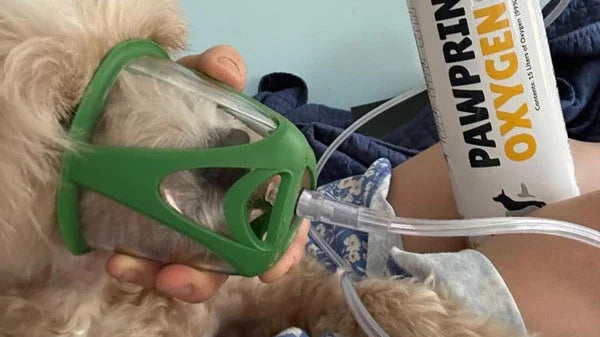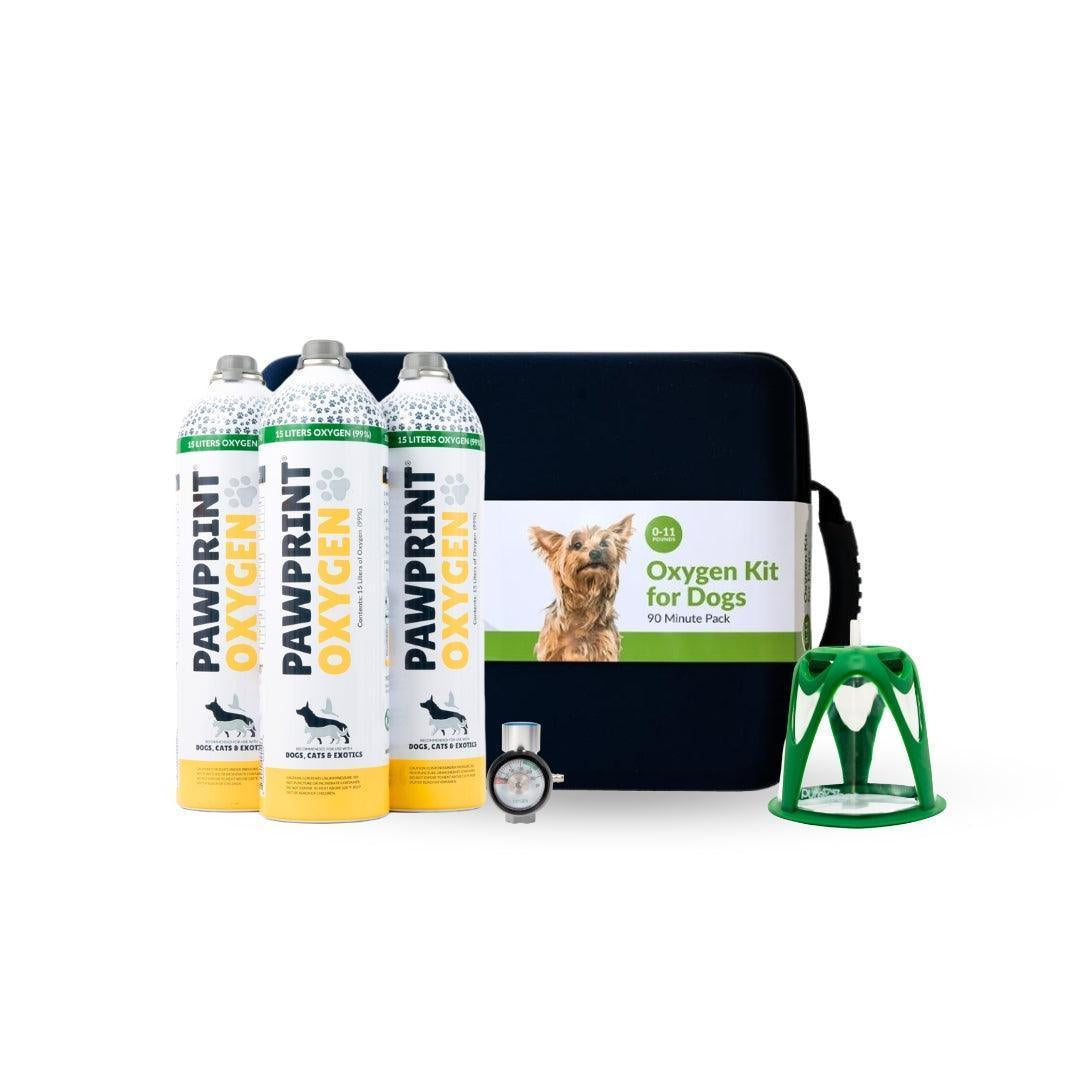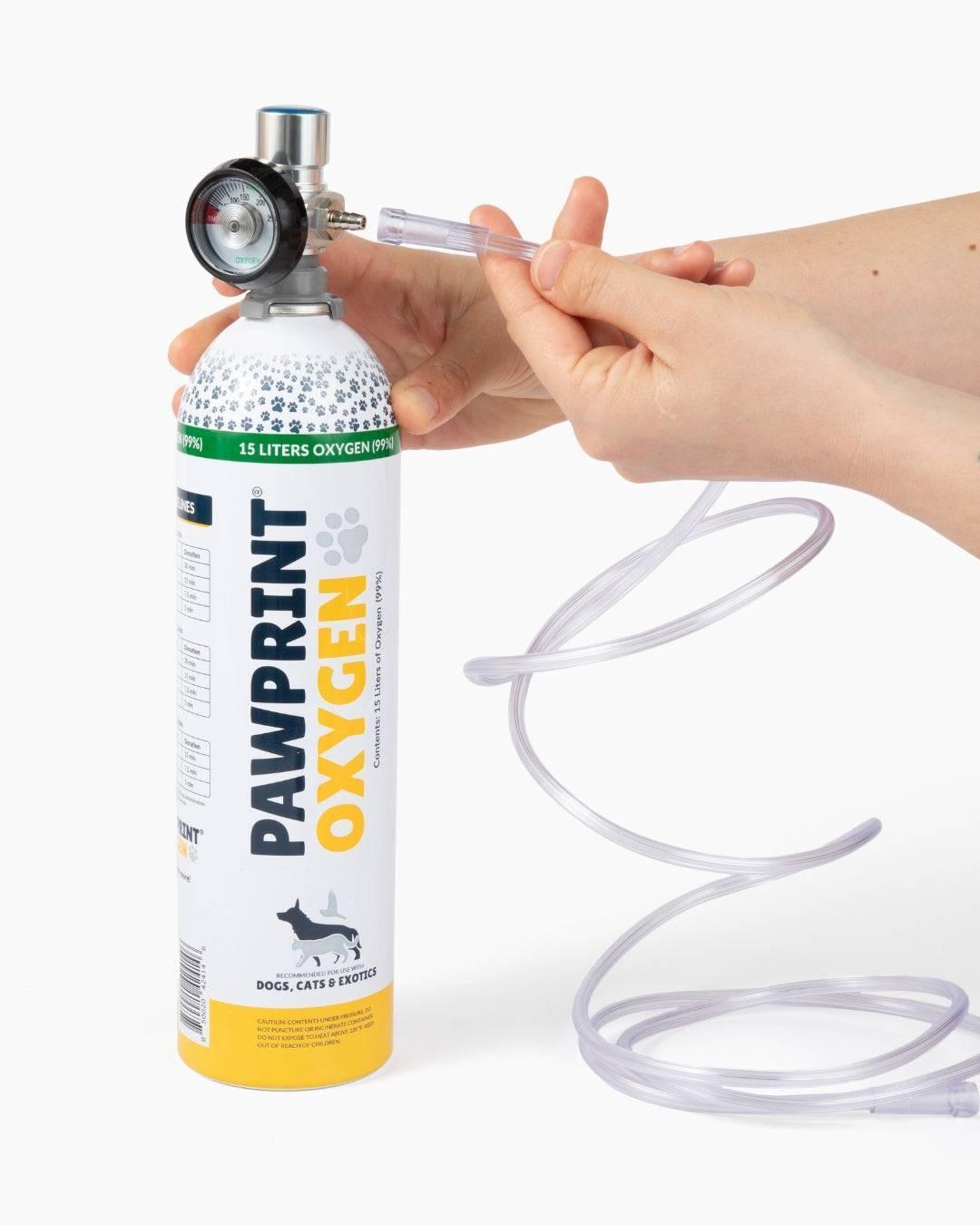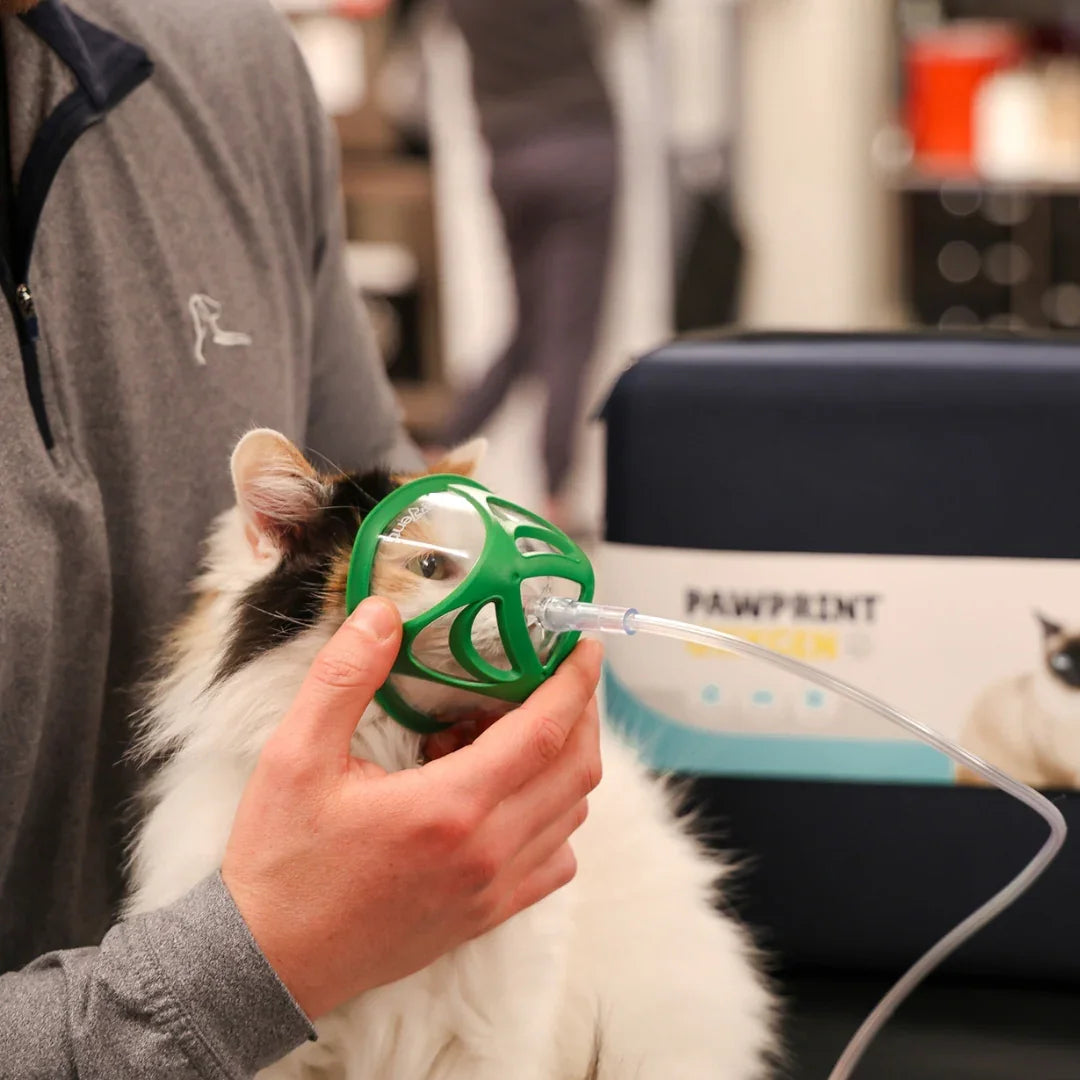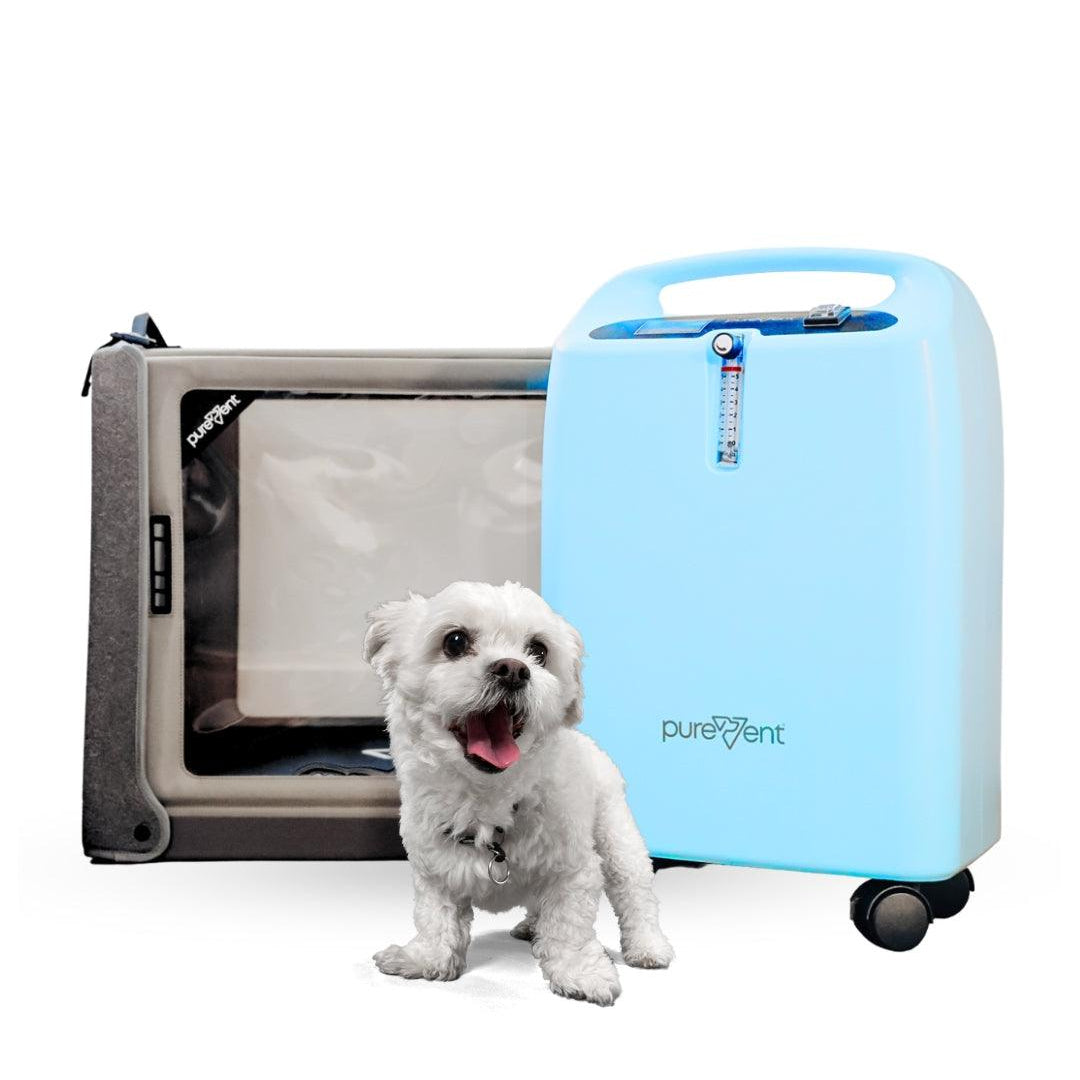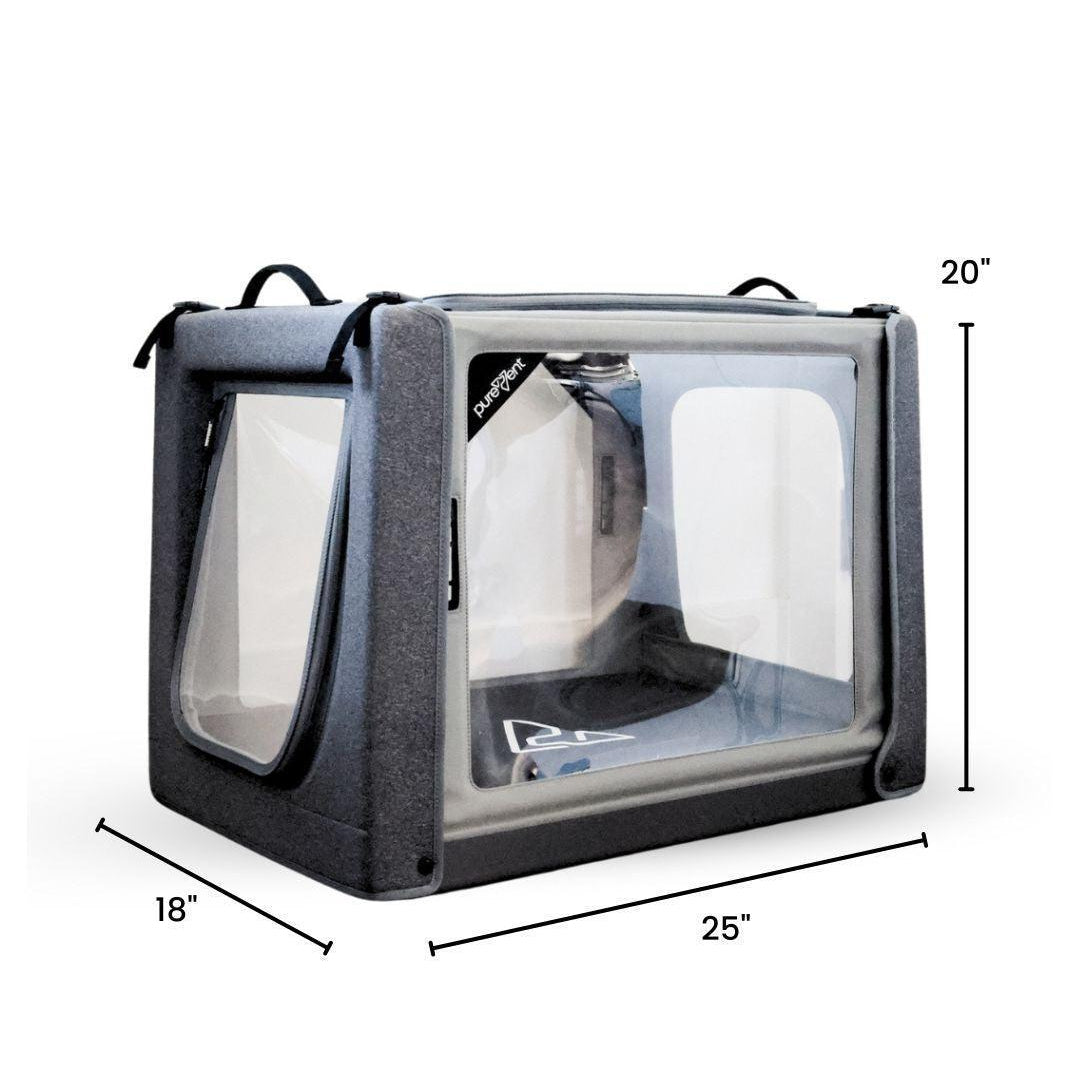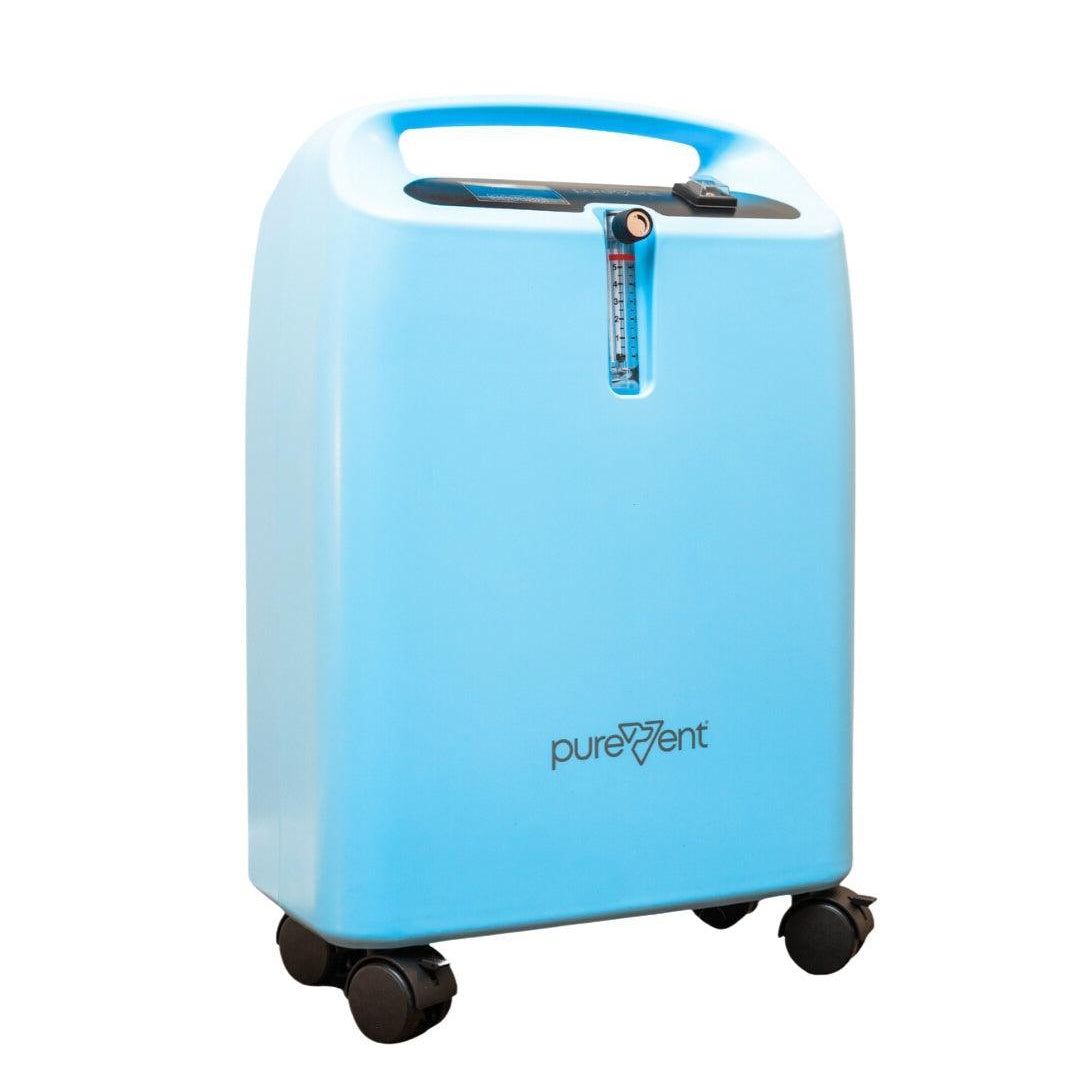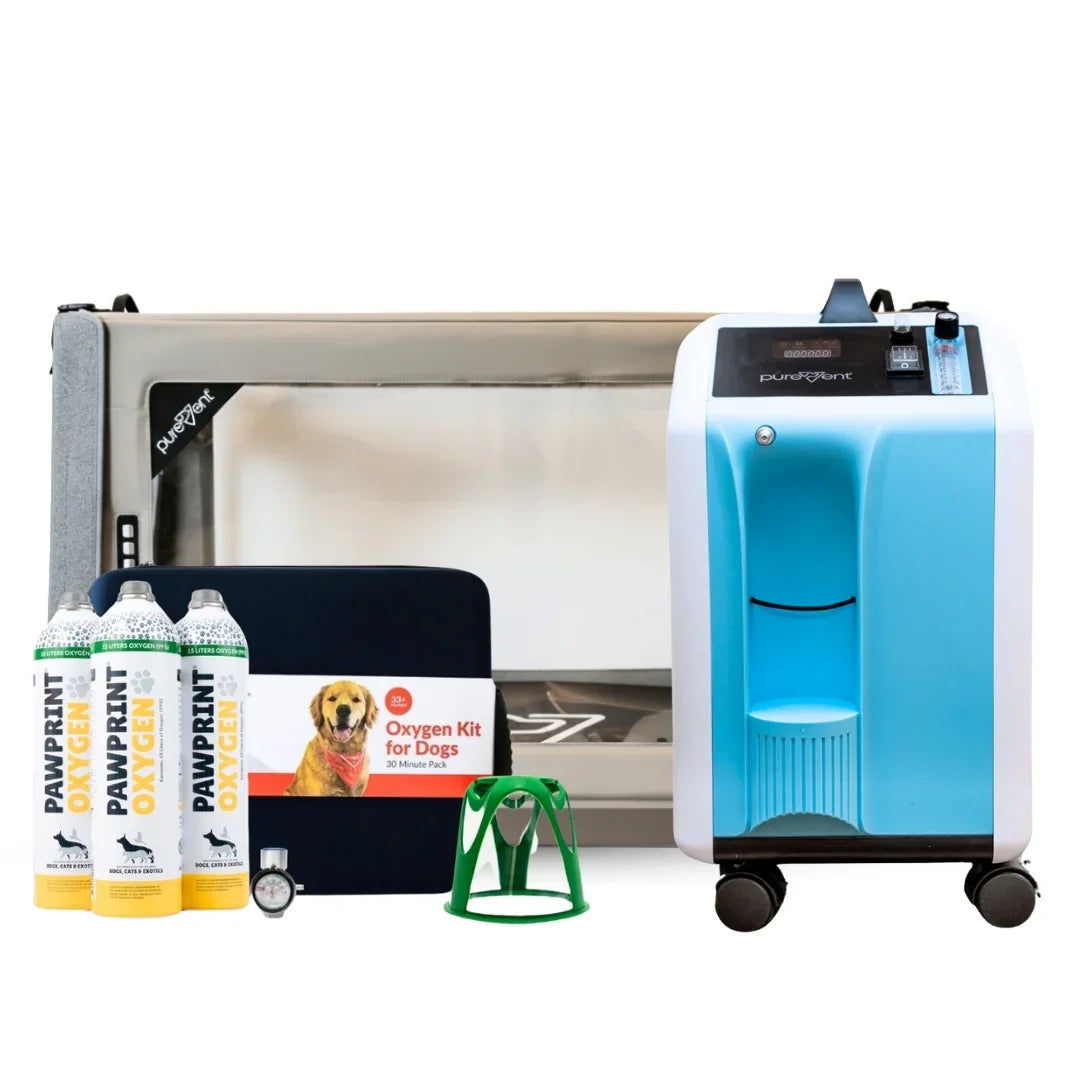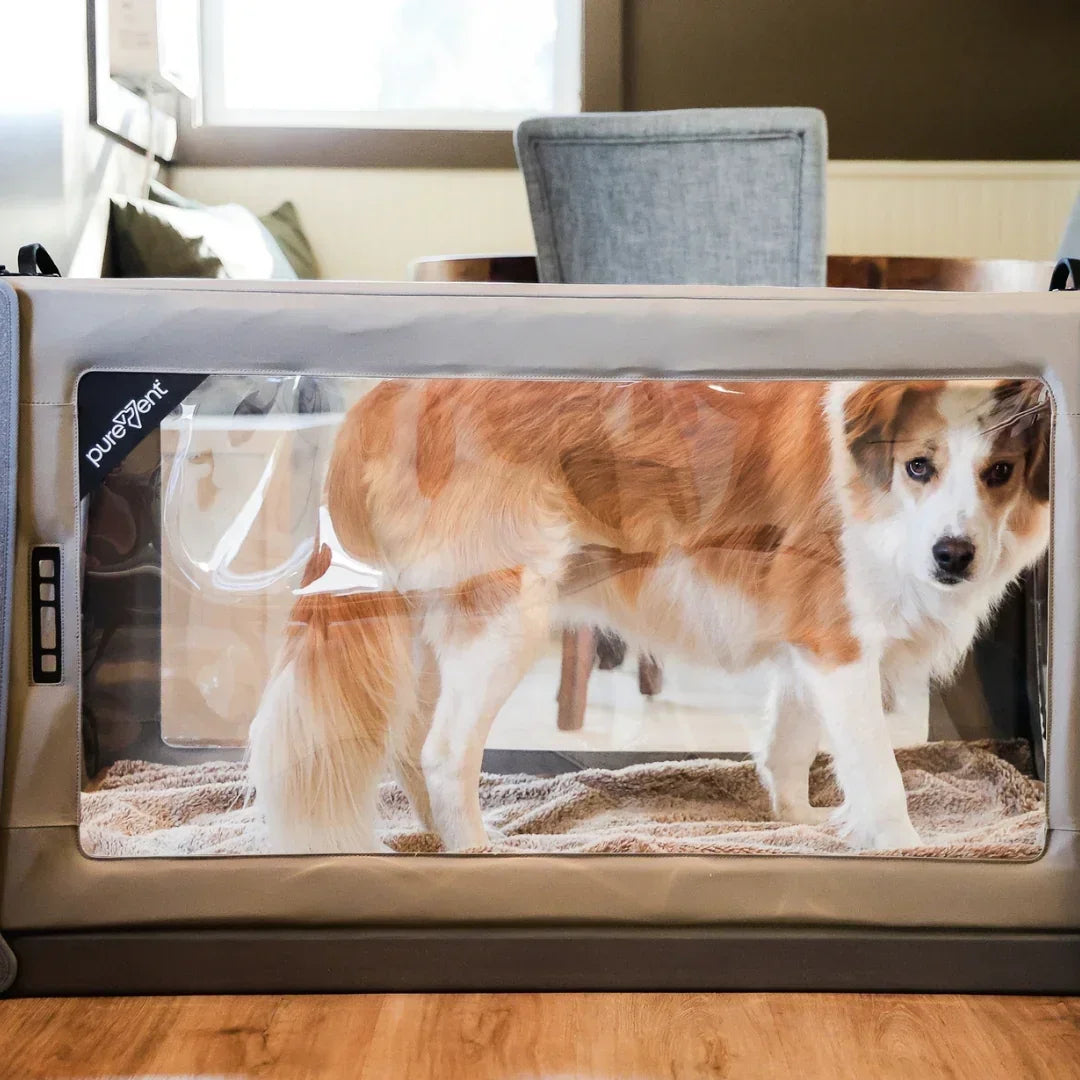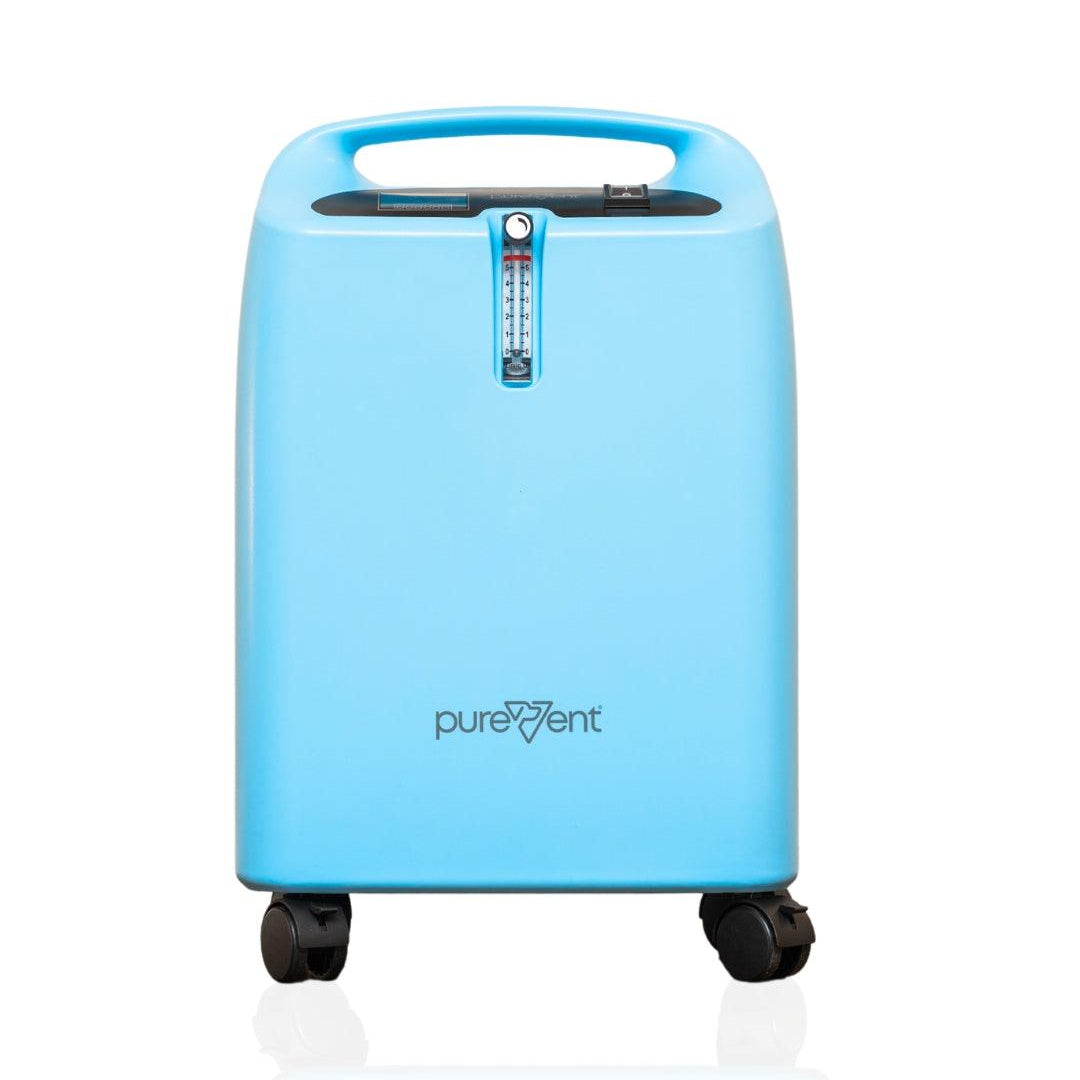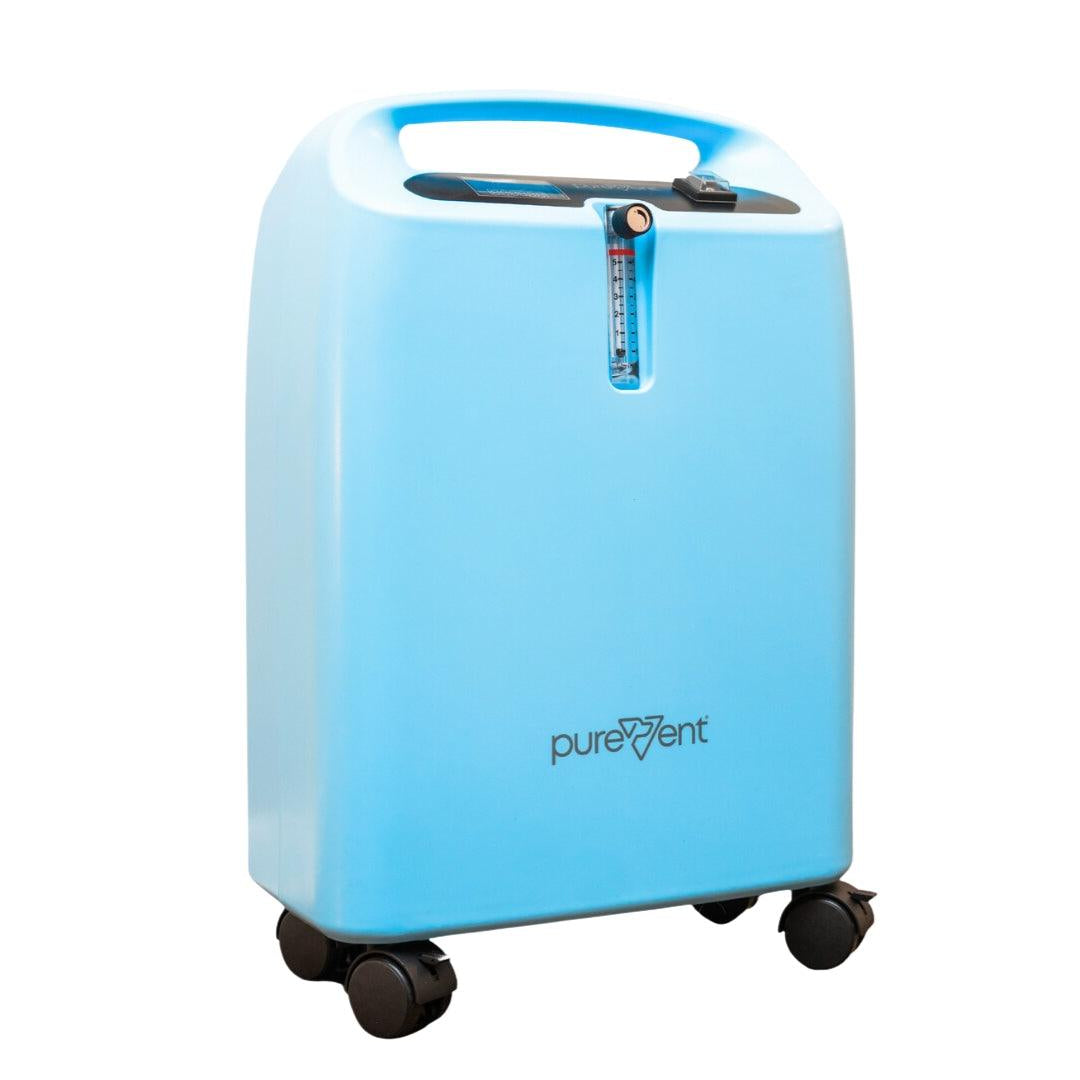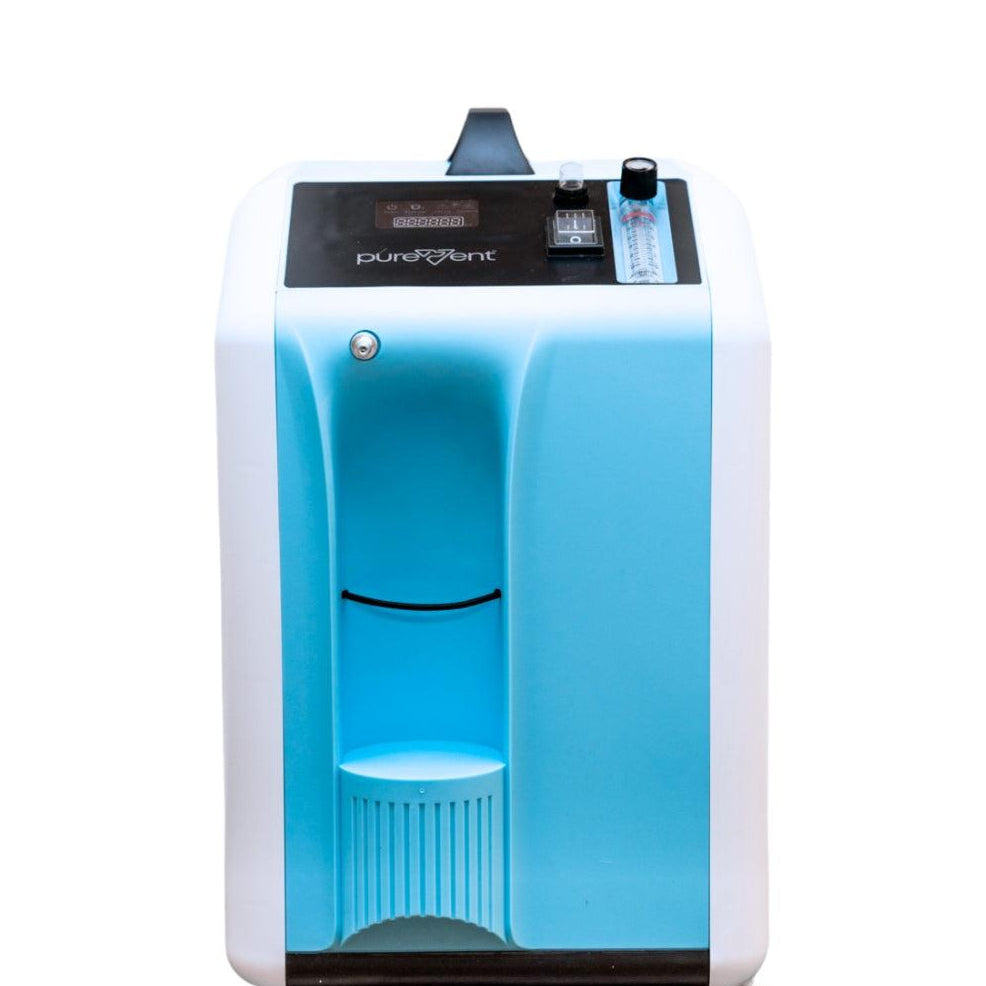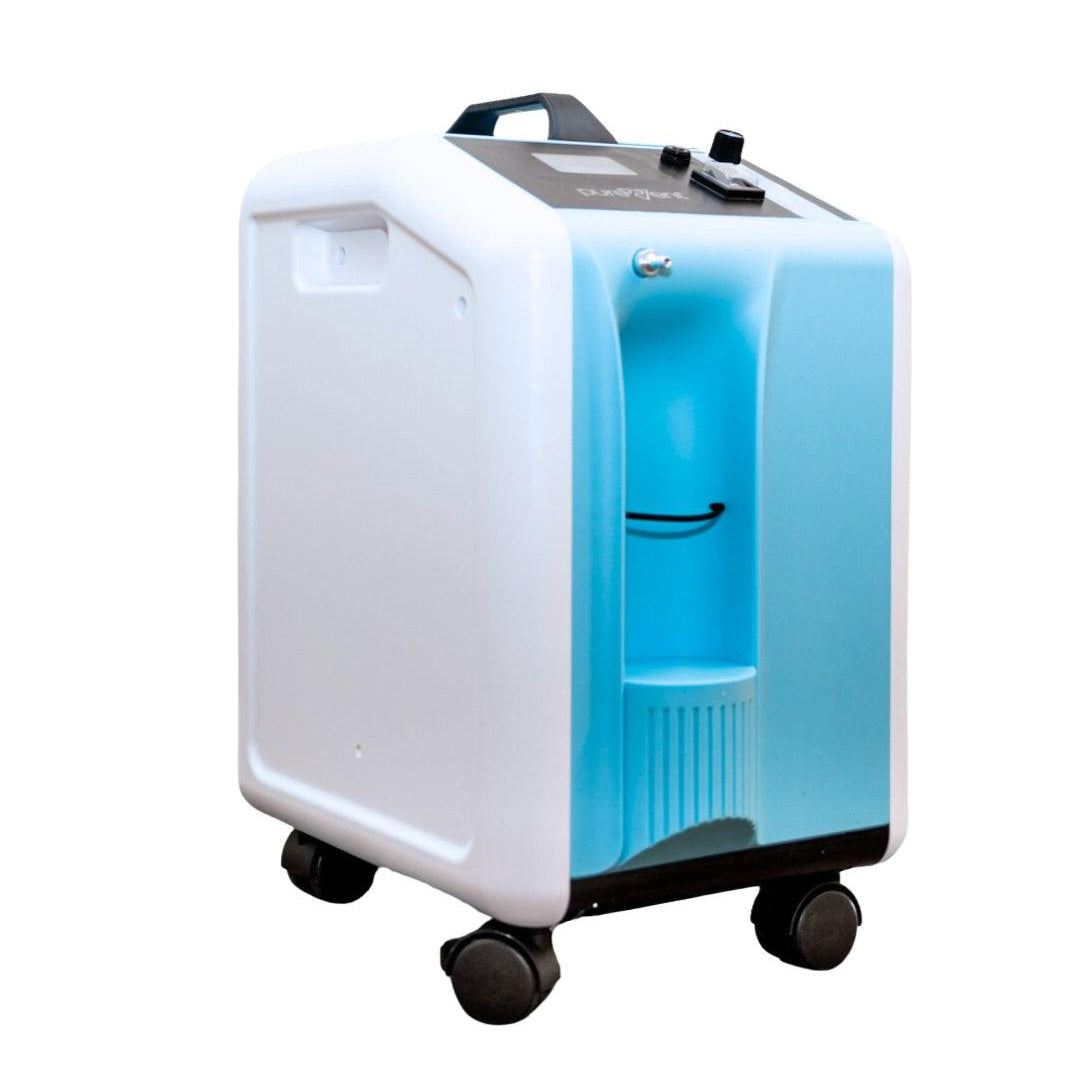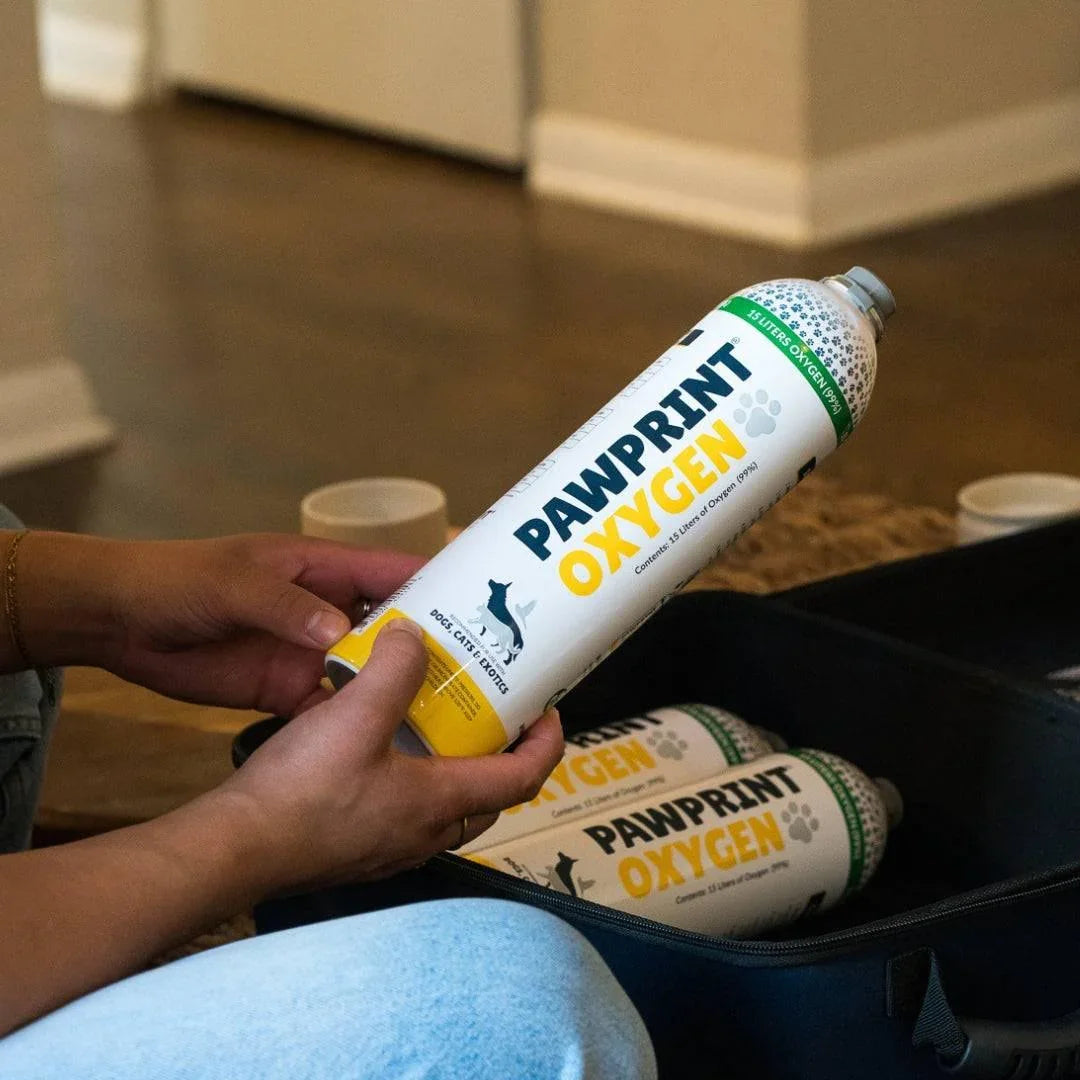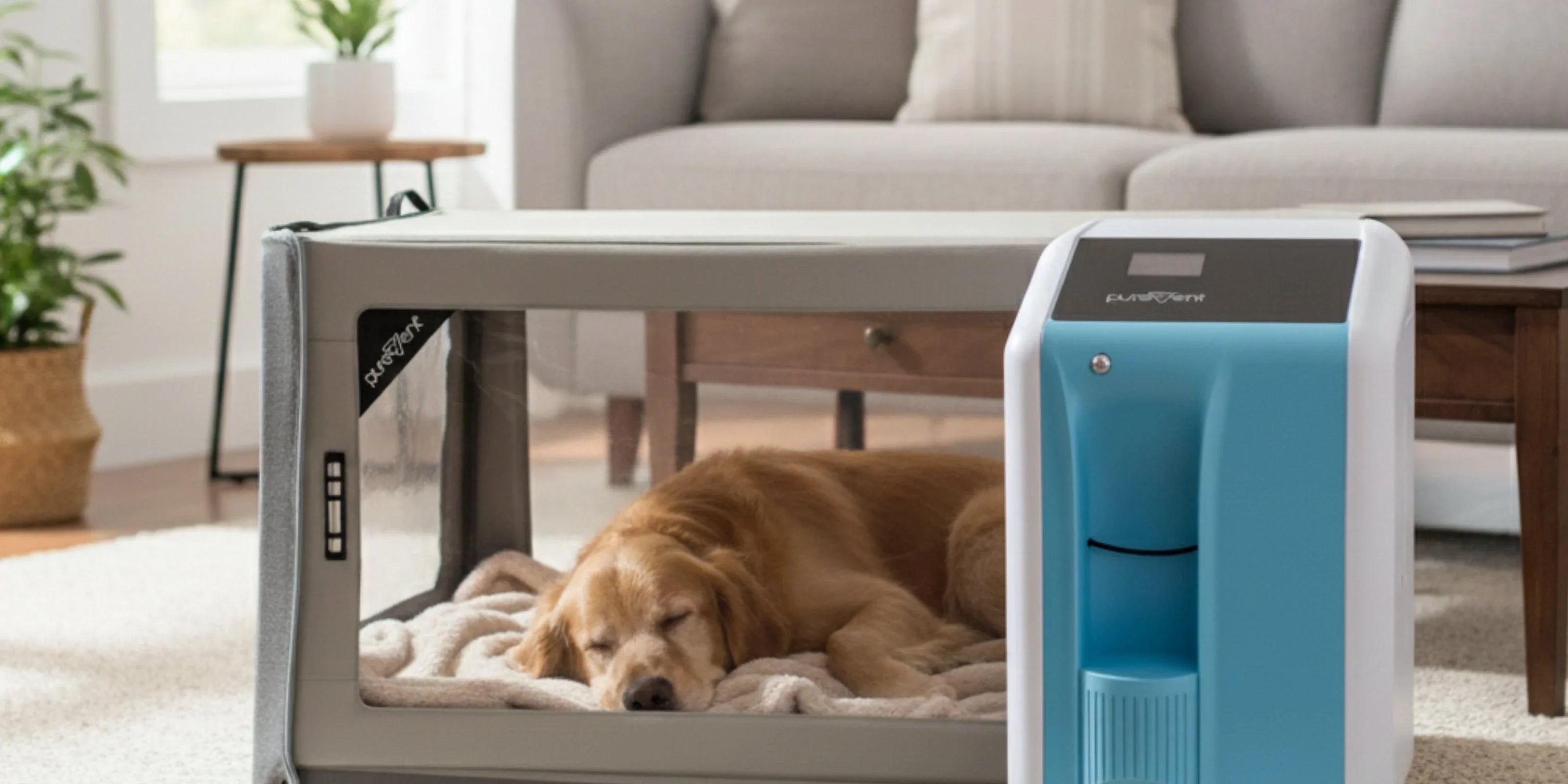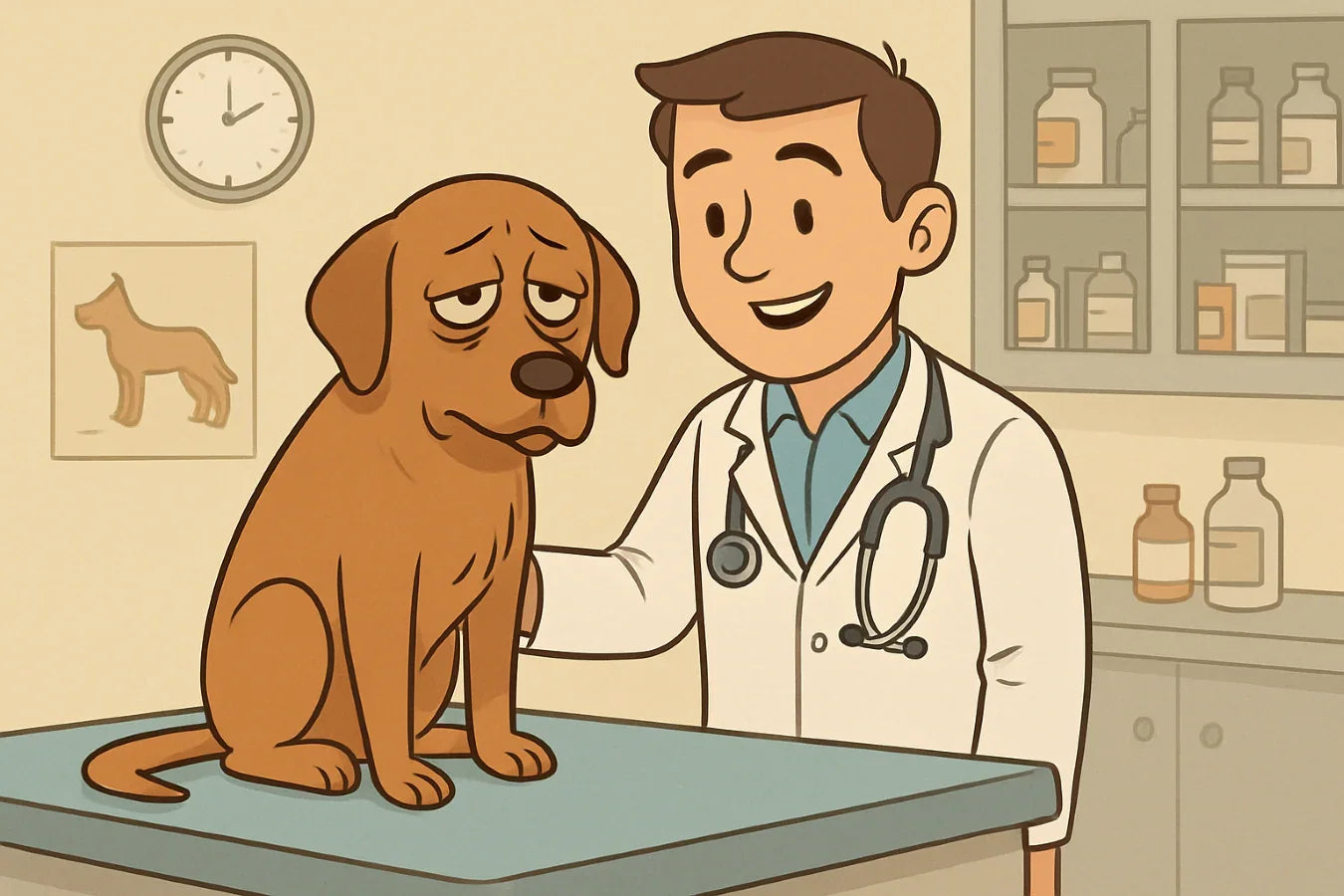While chronic bronchitis is a progressive condition, it doesn’t always mean your dog’s breathing will continue to get worse. With proper management , including medication, at-home oxygen therapy, and avoiding environmental irritants, most dogs can maintain a good quality of life for years. By working closely with your veterinarian and addressing flare-ups early, you can help your dog breathe easier and stay comfortable.
Table of Contents
When your dog is diagnosed with chronic bronchitis, it’s natural to feel worried about what the future holds. Chronic bronchitis is a long-term inflammation of the airways that causes persistent coughing, wheezing, and occasional difficulty breathing. While the condition can be progressive, there are many ways to help your dog stay comfortable and maintain a good quality of life. In this article, we’ll explain what to expect as the disease develops, how to manage flare-ups, and how treatments, including at-home oxygen therapy, can help your dog breathe easier.
Understanding Chronic Bronchitis in Dogs
Chronic bronchitis in dogs occurs when the airways become inflamed and thickened, making it harder for your dog to breathe easily. This inflammation often leads to excess mucus production and a persistent cough. While chronic bronchitis is progressive, meaning symptoms may slowly worsen over time, it’s also manageable with proper care and treatment.
Common causes and contributing factors include:
- Environmental irritants: such as cigarette smoke, household aerosols, or air pollution
- Allergens: including dust, pollen, or mold
- Obesity: excess weight can put added strain on the lungs and heart
- Respiratory infections: past or recurring infections can damage the airways
- Other lung diseases: such as tracheal collapse or pneumonia, which can contribute to ongoing airway irritation
By identifying and minimizing these triggers early, you can help reduce your dog’s symptoms and improve their long-term comfort.
Common Signs and Symptoms
Dogs with chronic bronchitis often show subtle signs at first, but over time, their symptoms can become more noticeable. The most common symptom is a persistent, dry cough that may sound harsh or hacking, especially after activity or excitement. Because inflammation affects how easily air moves through the lungs, many dogs also show signs of fatigue or shortness of breath during normal play or walks.
Common symptoms include:
- Persistent, dry, hacking cough that may worsen with excitement or exertion
- Wheezing or noisy breathing, especially during rest or mild activity
- Fatigue or reduced stamina during exercise or playtime
- Gagging or retching after coughing fits
- Episodes of labored breathing or panting, particularly in warm or humid weather
It’s important to note that symptoms can fluctuate, so your dog may seem better on some days and worse on others. Their condition can change depending on activity level, weather, and environmental triggers. Recognizing these patterns early helps you and your veterinarian adjust treatment to keep your dog comfortable.
Will My Dog’s Breathing Get Worse Over Time?
Chronic bronchitis is considered a progressive condition, meaning that if it’s left untreated, the inflammation in your dog’s airways can gradually worsen, making it harder for them to breathe over time. However, with consistent care and the right treatment plan, many dogs live comfortably for years after diagnosis. The goal is to manage symptoms, minimize flare-ups, and protect the lungs from further damage.
Several factors can make breathing problems worse, including:
- Continued exposure to irritants like cigarette smoke, dust, air fresheners, or cleaning sprays
- Respiratory infections or secondary diseases that add stress to already inflamed airways
- Cold, hot, or humid weather, which can make breathing more difficult
- Weight gain or poor fitness, which can increase the effort required to breathe
By working closely with your veterinarian and taking proactive steps to manage triggers, you can slow the progression of chronic bronchitis and help your dog maintain a happy, active life.
How is chronic bronchitis different from pneumonia or asthma?
Chronic bronchitis is a long-term inflammation of the airways that causes persistent coughing and mucus production, while pneumonia is an infection of the lungs that leads to fever, lethargy, and fluid buildup. Asthma, on the other hand, involves reversible airway constriction often triggered by allergens or stress. Unlike pneumonia or asthma, chronic bronchitis is progressive and requires ongoing management rather than short-term treatment.
How do veterinarians confirm a diagnosis of chronic bronchitis for your dog?
Veterinarians confirm chronic bronchitis through a combination of diagnostic tests and clinical signs. They typically start with chest X-rays to rule out other lung diseases, followed by bloodwork and sometimes airway sampling (like a bronchoscopy or tracheal wash) to check for infection or inflammation. A diagnosis is made when chronic coughing persists for more than two months and other causes are excluded.
Can chronic bronchitis be cured, or will my dog always have it?
Chronic bronchitis in dogs can’t be fully cured, but it can be effectively managed with the right care. The goal is to reduce inflammation, control coughing, and make breathing easier through medications, lifestyle adjustments, and supplemental oxygen therapy. With consistent treatment and monitoring, most dogs live comfortable, active lives despite the condition.
Treatment and Management Options
While chronic bronchitis can’t be cured, it can be effectively managed with the right combination of veterinary care and lifestyle changes. The goal of treatment is to control symptoms, reduce inflammation, and slow the progression of the disease so your dog can breathe more comfortably and enjoy daily life. Your veterinarian will create a care plan tailored to your dog’s needs, which may include medication, environmental adjustments, and gentle exercise routines.
Common treatment and management options include:
-
Veterinary-prescribed medications:
- Bronchodilators: relaxes and opens the airways for easier breathing
- Corticosteroids: reduces inflammation and airway swelling
- Antibiotics: only used if a bacterial infection is present or suspected
-
Lifestyle adjustments:
- Avoiding cigarette smoke, aerosols, and cleaning sprays that can irritate sensitive lungs
- Using an air purifier to help filter allergens and dust from the air
- Maintaining a healthy weight and incorporating gentle exercise to support lung function
- Using a harness instead of a collar to prevent pressure on the trachea and airways
With consistency and care, these steps can make a noticeable difference in your dog’s comfort and help minimize flare-ups over time.

The Role of At-Home Supplemental Oxygen Therapy
For dogs living with chronic bronchitis, having access to supplemental oxygen at home can make a world of difference during periods of respiratory distress or flare-ups. Oxygen therapy helps your dog recover from coughing fits, reduces strain on the heart and lungs, and provides much-needed relief when breathing becomes difficult. It also gives pet owners peace of mind knowing they can offer immediate support if their dog starts struggling to breathe.
Benefits of at-home oxygen therapy include:
- Increases oxygen levels during breathing crises or after intense coughing episodes
- Reduces the effort required to breathe, easing pressure on the lungs and heart
- Improves comfort and recovery, especially during flare-ups or stressful situations
- Provides peace of mind for owners managing chronic respiratory conditions at home
How at-home oxygen systems work:
- Portable oxygen canisters, used with a pet-specific oxygen mask (like the PureVent), deliver safe and effective oxygen therapy for short sessions or emergencies, whether at home or on the go.
- Oxygen concentrators or oxygen chambers are ideal for longer therapy sessions, offering a steady, controlled flow of oxygen for pets who need more consistent support.
While oxygen therapy should always be used under your veterinarian’s guidance, it’s one of the most effective tools for keeping dogs with chronic bronchitis comfortable and stable when breathing becomes more difficult.
When to Seek Veterinary Help
Even with careful management, there may be times when your dog’s symptoms suddenly worsen or new issues arise. It’s important to recognize the warning signs that your pet may need immediate veterinary attention. Early intervention can prevent serious complications and help your veterinarian adjust treatment before breathing problems become an emergency.
Contact your veterinarian right away if you notice:
- A worsening or more frequent cough, especially if it disrupts sleep or daily activity
- Labored or rapid breathing, or bluish gums or tongue (a sign of low oxygen levels)
- Loss of appetite, weakness, or lethargy
- Any sudden change in breathing pattern, such as heavy panting at rest or open-mouth breathing
Prompt veterinary care can make a critical difference in managing flare-ups, keeping your dog comfortable, and protecting their long-term health.

Long-Term Outlook and Quality of Life
With the right care and attention, many dogs with chronic bronchitis can live long, happy, and active lives. The key is consistent management, keeping up with prescribed treatments, monitoring symptoms, and scheduling regular veterinary checkups to track lung health. Maintaining a clean, calm environment also helps minimize irritants and stress that can trigger flare-ups.
By focusing on prevention and comfort, you can help your dog breathe easier and enjoy a great quality of life. Small adjustments, like using air purifiers, avoiding smoke or strong scents, and keeping your home dust-free, can make a big difference in their day-to-day comfort and overall well-being.
Giving Your Dog the Best Care
A diagnosis of chronic bronchitis doesn’t mean your dog’s breathing will inevitably get worse. With the right care, most dogs can continue to live full and joyful lives. Managing symptoms through medication, oxygen therapy, and a clean, stress-free environment helps your dog breathe more comfortably and stay active. By working closely with your veterinarian and taking early, attentive action, you can make a lasting difference in your dog’s health, comfort, and happiness for years to come.

